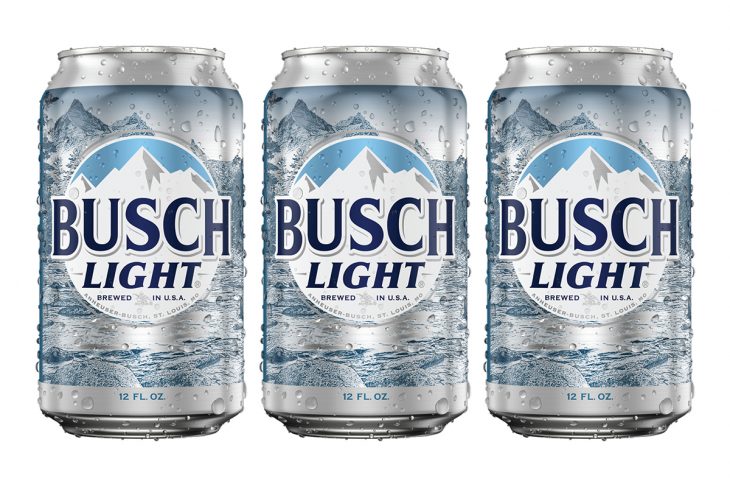
If you’re a beer drinker, chances are that you’ve heard of Busch Light. Whether you like to enjoy it with friends on the beach or just have one for yourself after a long day at work, there’s no doubt about the fact that this classic beer has become an American staple! But do you know what goes into your favorite light lager? To help answer that question and ensure smart drinking choices as we move forward, here are 10 Busch Light nutrition facts to get familiar with!
Calorie Content
A 12-ounce can of Busch Light contains 95 calories. This makes it a lower-calorie option compared to regular Busch beer, which has 133 calories per 12-ounce serving.
Alcohol Content
Busch Light has an alcohol by volume (ABV) of 4.1%, which is slightly lower than the 4.3% ABV found in regular Busch beer. This lower alcohol content contributes to the reduced calorie count.
Carbohydrates
A 12-ounce serving of Busch Light contains 3.2 grams of carbohydrates. This is significantly lower than the 10.6 grams found in a regular Busch beer.
Protein
Busch Light contains 0.7 grams of protein per 12-ounce serving, which is slightly less than the 1.1 grams of protein found in regular Busch beer.
Fat Content
There is no fat in Busch Light, making it a suitable option for those watching their fat intake.
Gluten Content
Like most beers, Busch Light contains gluten. It is brewed from barley and hops, both of which contain gluten. Those with gluten sensitivities or celiac disease should avoid Busch Light.
Brewing Process
Busch Light is brewed using a combination of malted barley, hops, and water. The brewing process involves fermenting the malted barley to produce alcohol, with hops added for flavor and bitterness.
Light Beer vs. Regular Beer
Light beers, like Busch Light, typically have fewer calories and less alcohol than their regular counterparts. This makes them a popular choice for those looking to enjoy a beer without consuming too many calories.
Busch Light vs. Other Light Beers
When compared to other light beers, Busch Light’s calorie count is competitive. For example, a 12-ounce serving of Bud Light contains 110 calories, while a 12-ounce serving of Coors Light has 102 calories.
Serving Suggestions
Busch Light is best served cold and can be enjoyed straight from the can or poured into a glass. Pair it with light snacks, such as pretzels or popcorn, or enjoy it alongside a meal.

More About Busch Light
Popularity
Busch Light is a popular choice among light beer drinkers in the United States. It is often praised for its smooth, crisp taste and affordability.
Brand History
Busch beer was first introduced in 1955 by Anheuser-Busch. The light version, Busch Light, was later introduced in 1989 to cater to the growing demand for lower-calorie beer options.
Distribution
Busch Light is widely available across the United States and can be found in various retail stores, bars, and restaurants. It is primarily distributed within the country, but can also be found in select international markets.
Can and Bottle Design
Busch Light’s packaging features a blue and silver design that distinguishes it from the regular Busch beer, which has a green and gold design. The iconic Busch logo is prominently displayed on both cans and bottles, making it easily recognizable to consumers.
Environmental Initiatives
Anheuser-Busch, the parent company of Busch Light, is committed to sustainability and has implemented various environmental initiatives. These include water conservation efforts, reducing greenhouse gas emissions, and using renewable energy sources in their brewing facilities.
Conclusion
While we all inherently know that drinking alcoholic beverages can be detrimental for your body if overindulged in, it’s important to also note that not all light lagers are created equal. Busch Light is a great middle ground when it comes to taste and mixability without the weak flavor or extra calories of a heavier beer. However, 10 nutritious facts uncovered by analyzing its ingredients show how this pale lager still contains alcohol content and is not calorie-free. Understanding what exactly goes into the beverage while factoring in moderation can help you make more informed choices and keep you educated on your own individual health!
Was this page helpful?
Our commitment to delivering trustworthy and engaging content is at the heart of what we do. Each fact on our site is contributed by real users like you, bringing a wealth of diverse insights and information. To ensure the highest standards of accuracy and reliability, our dedicated editors meticulously review each submission. This process guarantees that the facts we share are not only fascinating but also credible. Trust in our commitment to quality and authenticity as you explore and learn with us.
